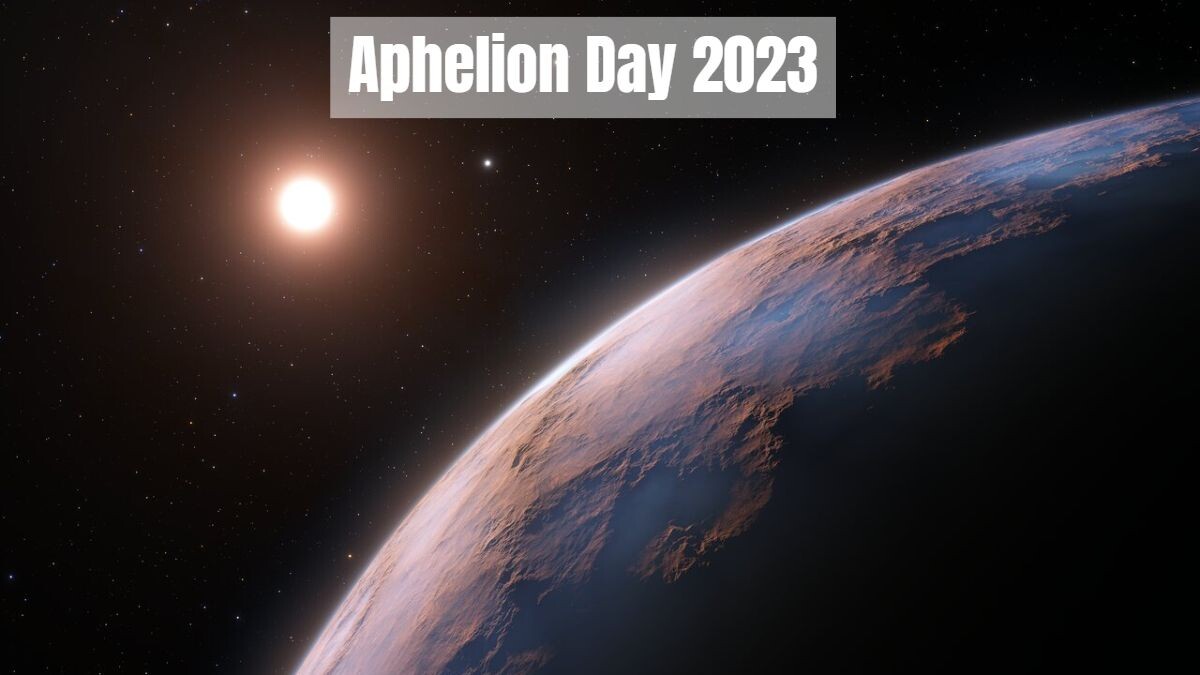Aphelion Day 2023 is an astronomical event that marks the furthest point from the Sun from Earth and other planets in its elliptical orbit and will be observed this week. This celestial phenomenon occurs annually in July when our planet reaches its maximum distance from the sun.
Aphelion Day is a fascinating reminder of the intricate dance between the Earth and the Sun, showing the forces that shape our seasons and influence our climate. It provides an opportunity for scientists, astronomy enthusiasts and curious people to delve into the mysteries of our vast solar system.
It’s an appropriate day to learn what aphelion means: today, the Earth is at the farthest point from the Sun in our orbit. https://t.co/AVCDrMWowa https://t.co/gSN8iPUMRK
– NASA Earth (@NASAEarth)
July 4, 2020
During aphelion, the Earth is about 152 million kilometers (94.5 million miles) away from the Sun, about 5 million kilometers (3 million miles) further than during perihelion, the point of closest approach. This means that our planet is experiencing a slightly reduced amount of solar radiation compared to other times of the year.
The reason for the Earth’s elliptical orbit and the variation in its distance from the Sun lies in the gravitational interaction between the two celestial bodies. Johannes Kepler, the famous German astronomer, described this phenomenon in his laws of planetary motion during the 17th century.

Kepler’s laws state that “the planets move around the Sun in elliptical orbits, with the Sun located at one of the foci of the ellipse.” As a result, the Earth’s distance from the Sun fluctuates throughout the year, leading to the appearance of Aphelion Day.
Astronomy enthusiasts and scientists often mark this occasion by hosting stargazing events, where people gather to observe the night sky and learn more about Earth’s place in the cosmos. These meetings provide an opportunity to foster curiosity, inspire the next generation of scientists, and deepen our understanding of the universe we inhabit.
Venus and Mars will be visible to the naked eye about an hour after sunset. Observers of the western sky will notice that Venus shines brightly, resembling a bright white star. Mars, on the other hand, will appear as a smaller red star.
Why is it still so hot?
The impact of aphelion on our planet is not limited to astronomical curiosity. Varying distance affects Earth’s climate, albeit subtly. Since the amount of solar energy reaching the planet is slightly reduced during aphelion, it has a minor cooling effect. However, this effect is overshadowed by other factors, such as the tilt of the Earth’s axis, which is the main driver of our seasons.
The main factor that determines the seasons and temperature variations on Earth is not the distance from the Sun but the tilt of the Earth’s axis. This axial tilt, of approximately 23.5 degrees, means that different parts of the planet receive varying amounts of sunlight throughout the year.

During Aphelion Day, the northern hemisphere is tilted towards the Sun, resulting in summer in that region. The tilt allows sunlight to hit the surface more directly, causing increased solar radiation and higher temperatures. So even though the Earth is further away from the Sun during this time, the tilt of the axis compensates for the reduction in solar energy, resulting in a warm climate.
It is important to note that the effect of the Earth’s elliptical orbit and aphelion on temperature is relatively minor compared to the impact of axial tilt. The tilt of the axis is the main driver of the seasons, while the variation in the Earth’s distance from the Sun has a secondary influence.
Other factors, such as local geography, ocean currents, and atmospheric conditions, also play an important role in determining the weather on Aphelion Day. For example, proximity to large bodies of water, mountain ranges, or prevailing wind patterns can affect heat distribution and modify local temperatures.
Categories: Optical Illusion
Source: ptivs2.edu.vn
